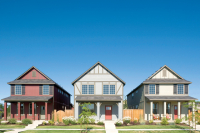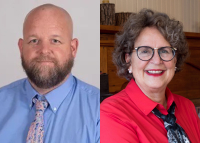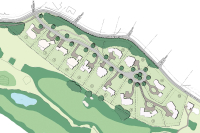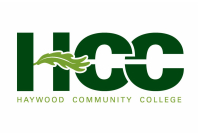Jackson talks capital: Five-year plan maps spending for school, health, animal shelter and courtroom projects
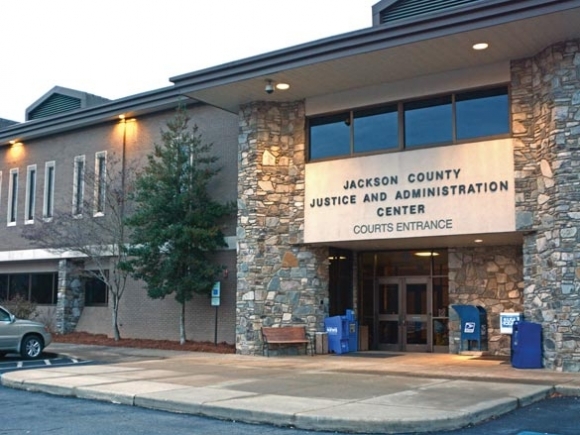
From softball fields to health buildings to animal shelters, funding requests have been arriving hot and heavy to the Jackson County Commissioners’ desks as budget season heats up. As the deadline for the 2017-18 budget draws nearer, the pressure to make tough decisions about what gets funded and what doesn’t is increasing.
“It’s an unusual year in regard to the requests being so high across the board,” said County Manager Don Adams. In addition to the typical funding requests the county receives each year, he’s received $8.8 million in new requests.
Adams’ charge, in his first budget season as Jackson County’s manager, is to come up with a way to fund everything commissioners think is needed without raising taxes. Last year commissioners hiked the rate by 9 cents per $100 of value in response to rising costs and a reduced county property valuation — increasing it again wasn’t on the table this go-around.
The biggest discussions so far have revolved around capital projects — proposed buildings like Southwestern Community College’s new health sciences building or a new location for the Jackson County Animal Shelter, to name a couple. After hearing all the requests and looking at all the numbers, Adams and Finance Director Darlene Fox put their heads together to come up with a five-year capital improvement plan that aims to meet all the requests without robbing the county’s fund balance.
“I think it’s a good plan,” said Commission Chairman Brian McMahan. “I am fully supportive of what the county manager has put forward.”
The four other commissioners echoed McMahan’s support. However, the devil’s in the details, and the board will have plenty to discuss as the projects outlined in the plan move forward.
Related Items
Education projects
Jackson County Public Schools
The plan calls for $2.4 million in capital projects over the next five years. Of that, $1.4 million would be used to address the top three needs in each school — the list includes upgrading fire alarm systems, installing panic levers and upgrading to Americans with Disabilities Act-compliant water fountains and bathrooms. The remaining $1 million would fund a new softball field and track. The money would come mainly from the school system’s capital reserve fund. Currently, the school system is working to complete $9 million in capital projects that commissioners funded through a loan issued last year.
Southwestern Community College
Over the next four years, SCC would get $19.8 million to construct a new health sciences building. Construction would start in 2018-19, the same year in which the county would take out a $10 million loan to fund the project. The process will begin this budget year using $5.4 million in N.C. Connect bond funds. A quarter-cent sales tax, which Jackson County voters approved last year, would pay the remaining cost, with the building paid off by 2034. In addition, SCC is asking for $935,800 to build a new parking lot, finish building a new maintenance building and complete some general maintenance projects. Recommendations related to this request will be presented with the entire 2017-18 proposed budget on May 15 and are not part of the five-year plan.
Reactions
All the commissioners expressed support for the plan.
“I think that’s a good plan,” said Commissioner Mickey Luker, who said the needs of both SCC and the school system were addressed. “In early discussion that was the only way I said I would vote for it. I’m not going to go for a plan that for 10 years takes all the funding away from our public schools.”
When Jackson County voters passed the quarter-cent sales tax last year, the promise was that funds collected would go toward projects at SCC and Jackson Schools, with the health sciences building as the flagship initial project. But during budget talks, some commissioners expressed concern about dedicating the new funding stream to the SCC building for too many years running. The schools shouldn’t have to wait too long to get their share, they said, and regardless of what had actually been said many voters were under the impression that the funding was mainly for the K-12 schools.
Commissioner Boyce Dietz was one of those, but he’s since changed his mind.
“I was wrong on that,” he said. “Although we’re going to use this money for three or four years to do that (build the SCC health sciences building) with, we have more than adequately done things to help the school system in the last year or so.”
Under the plan, all quarter-cent sales tax proceeds — projected to total $1.2 million this year — will go toward the health sciences building project for the next four years, after which the ratio will gradually shift in favor of the school system. Jackson Schools will get $500,000 of the revenue in 2020 and receive $900,000 by 2024, at which time the annual revenue is projected to be $1.9 million.
However, the school system will have plenty of capital projects to tackle while it’s waiting for the sales tax revenue to come its way. Jackson Schools is currently in the midst of spending $9 million the county gave last year to address emergency capital projects, and the five-year plan includes funding for priority projects at several school facilities and a new track and softball field. All that will keep the school system plenty occupied.
“This road map clearly showed what is available and what will be available over the next few years,” said Jackson Schools Superintendent Michael Murray. “The school system is busy spending the over $9 million that were provided through QZAB loans to replace roofs, electrical, HVAC and water systems within our nine buildings.”
Of course, the dollars for projects to take place before quarter-cent sales tax money becomes available will be coming from the school’s own capital reserves. However, on the flip side the plan for school funding shows an unallocated $2.9 million in capital reserves and quarter-cent sales tax by the time the five-year plan ends in 2021-22. Of that $1.3 million is sales tax money.
According to Adams, that unallocated, extra money is a “real key part” of the plan, giving the school system some flexibility should new capital needs arise or existing ones cost more than expected. For example, Adams said, it’s quite possible that $1 million won’t be enough to build both a softball field and a track.
“I think the quarter-cent sales tax is one of the best things the citizens of this county ever decided to do,” Dietz said, “because it raises quite a bit of money every year that will be there forever to make our community college and our school system better.”
County facility projects
Health Department
Under the plan, $7 million would be allocated for a new or renovated Health Department building — commissioners have not yet decided which — with construction starting in 2018-19. Of the $7 million, $6.6 million would come from the fund balance and $403,000 would come from capital reserve.
Animal Shelter
The plan calls for a new $3.5 million animal shelter that would be paid for completely out of capital reserve. Construction would start in 2019-20. However, this timeline is likely to be revised as commissioners have asked Adams to move the planning stage up one year, meaning construction could begin as early as 2018-19.
Justice Center expansion
The cost to expand courtroom space to accommodate current needs is projected at $1.5 million, to be paid for out of capital reserve with construction starting in 2018-2019.
Reactions
Overall, commissioners are happy with the plan and support the general timeline and projects included. However, several big decisions must be made before these projects can move forward.
When it comes to the health department building, there’s no consensus among commissioners as to whether it makes more sense to renovate the existing building or build a new one. According to a study completed in January, renovating the existing building would cost $4.7-5.7 million, and a new building would cost about $5.6 million. However, the projected cost of the new building doesn’t include the cost of purchasing land, and neither estimate includes architecture and engineering fees, contingency costs, or furniture and equipment costs.
“It’s just something that we’ve got to study a little bit more on,” said Commissioner Charles Elders.
While several of the commissioners said they were leaning one way or another, none of them said they’d firmly made up their minds on the issue, and that’s a basic choice that will have to be made before the project can move forward. The county is currently under contract for a piece of property on Skyland Drive that could hold a new health building if that’s the route commissioners decide to go, but it’s unclear at this point if the county will go through with the purchase or if commissioners would agree that to be the optimal location for a new building.
Luker, for example, favors a new health building but would like to see it built near the Department of Social Services, which is located along N.C. 116 toward Webster. The two agencies work closely on many issues, Luker said, so “it’s only beneficial to have both of those agencies very close to each other.”
Land is also the big question in the animal shelter project. Renovating the existing facility is out of the question, but no plans have been made for where to locate a new one.
“If you don’t have property, it’s really difficult to plan any kind of facility without property,” Adams said. “Property can change the facility.”
Going into the next budget year, Adams said finding a spot for the animal shelter must be a main focus.
The fact that so much is uncertain about the scope and location of these projects spurred Commissioner Ron Mau to ask that the timeline on planning the animal shelter get moved up.
“We have money in the budget to go forward with planning, so I was thinking more keep our options open, move forward with the planning for both,” he said. “If we don’t move forward with the planning, we won’t be able to pursue those other options if they were to make themselves available.”
If everything goes according to plan, all three projects will be complete by the time the five-year plan wraps up in 2022. And, though such plans are inclined to fluctuate from year to year, McMahan is hoping that this one sticks as close to the timeline as possible.
“Most of these have been on our plate for quite some time, and I’d like to see some traction. I’d like to see some construction start,” he said. “We’ve talked them to death.”





